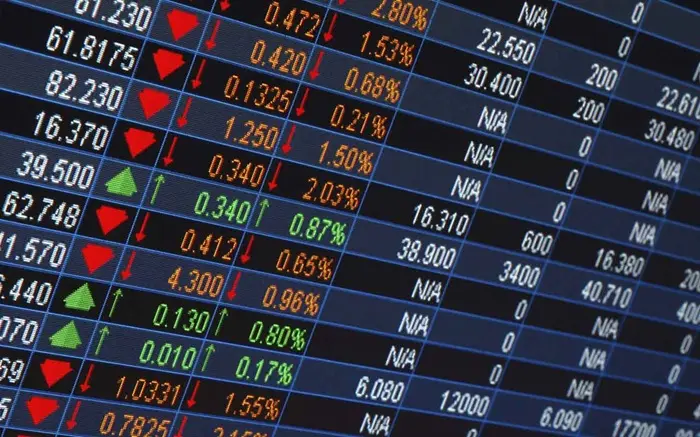Forex trading, also known as foreign exchange trading, is the process of buying and selling currencies on the foreign exchange market. It is one of the largest and most liquid financial markets in the world, with a daily trading volume exceeding $6 trillion. Forex trading offers numerous opportunities for profit, but it also comes with significant risks. This article will provide a comprehensive guide on how to do forex trading, covering the basics, strategies, tools, and tips for success.
Understanding Forex Trading
Forex trading involves the exchange of one currency for another with the aim of making a profit. The forex market operates 24 hours a day, five days a week, and is decentralized, meaning it has no central exchange. Instead, trading is conducted over-the-counter (OTC) through a global network of banks, brokers, and financial institutions.
Key Concepts in Forex Trading
Currency Pairs: Forex trading involves trading currency pairs, such as EUR/USD (Euro/US Dollar) or GBP/JPY (British Pound/Japanese Yen). The first currency in the pair is the base currency, and the second is the quote currency.
Exchange Rate: The exchange rate is the price of one currency in terms of another. It indicates how much of the quote currency is needed to buy one unit of the base currency.
Pip: A pip is the smallest price move that a given exchange rate can make. Most currency pairs are quoted to four decimal places, so a pip is typically 0.0001.
Leverage: Leverage allows traders to control a larger position with a smaller amount of capital. It amplifies both potential profits and losses.
Spread: The spread is the difference between the bid (buy) price and the ask (sell) price of a currency pair. It represents the cost of the trade.
Steps to Start Forex Trading
Starting forex trading involves several steps, from understanding the market to executing trades. Here’s a step-by-step guide to help you get started:
Step 1: Educate Yourself
Before diving into forex trading, it’s essential to educate yourself about the market, trading strategies, and risk management. There are numerous resources available, including books, online courses, webinars, and forums.
Key Topics to Learn:
Market Basics: Understand how the forex market works, including currency pairs, exchange rates, and market participants.
Trading Strategies: Learn about different trading strategies, such as day trading, swing trading, and position trading.
Technical Analysis: Study technical analysis tools and indicators, such as moving averages, RSI, and Fibonacci retracements.
Fundamental Analysis: Understand fundamental analysis, which involves analyzing economic indicators, interest rates, and geopolitical events.
Risk Management: Learn about risk management techniques, such as setting stop-loss orders and managing leverage.
Step 2: Choose a Reliable Forex Broker
Choosing a reliable forex broker is crucial for successful trading. A good broker should offer a user-friendly trading platform, competitive spreads, reliable execution, and strong customer support.
Factors to Consider:
Regulation: Ensure the broker is regulated by a reputable financial authority, such as the CFTC, FCA, or ASIC.
Trading Platform: Choose a broker with a reliable and user-friendly trading platform, such as MetaTrader 4 or 5.
Spreads and Fees: Compare spreads and fees among brokers to find the most cost-effective option.
Leverage and Margin: Understand the leverage and margin requirements offered by the broker.
Customer Support: Ensure the broker offers strong customer support, including 24/7 assistance.
Step 3: Open a Demo Account
Before trading with real money, it’s advisable to open a demo account with your chosen broker. A demo account allows you to practice trading in a risk-free environment using virtual funds.
Benefits of a Demo Account:
Practice Trading: Gain hands-on experience with the trading platform and test different strategies.
Understand Market Dynamics: Learn how the market moves and how to react to different market conditions.
Build Confidence: Build confidence in your trading skills before transitioning to a live account.
Step 4: Develop a Trading Plan
A trading plan is a comprehensive document that outlines your trading goals, strategies, risk management rules, and trading schedule. It serves as a roadmap for your trading activities and helps you stay disciplined.
Components of a Trading Plan:
Trading Goals: Define your short-term and long-term trading goals.
Trading Strategy: Outline the strategies you will use, including entry and exit criteria.
Risk Management: Specify your risk management rules, such as position sizing, stop-loss orders, and risk-reward ratios.
Trading Schedule: Define your trading schedule, including the times you will trade and the currency pairs you will focus on.
Performance Review: Include a plan for regularly reviewing and adjusting your trading plan based on performance.
Step 5: Start Trading with a Live Account
Once you are comfortable with your demo account and have a solid trading plan, you can open a live trading account with your broker. Start with a small amount of capital and gradually increase your position size as you gain experience.
Tips for Live Trading:
Start Small: Begin with a small amount of capital to minimize risk.
Follow Your Plan: Stick to your trading plan and avoid impulsive decisions.
Manage Risk: Use risk management techniques to protect your capital.
Stay Informed: Keep up with market news and economic events that may impact currency prices.
Review Performance: Regularly review your trading performance and make adjustments as needed.
Forex Trading Strategies
There are numerous forex trading strategies that traders can use to achieve their goals. Here are some of the most popular strategies:
Day Trading
Day trading involves opening and closing trades within the same trading day. Day traders aim to capitalize on short-term price movements and avoid holding positions overnight.
Key Features:
Short-Term Focus: Trades are typically held for minutes to hours.
High Frequency: Day traders may execute multiple trades in a single day.
Technical Analysis: Relies heavily on technical analysis and chart patterns.
Swing Trading
Swing trading involves holding trades for several days to weeks to capture medium-term price movements. Swing traders aim to profit from price swings or “swings” in the market.
Key Features:
Medium-Term Focus: Trades are typically held for several days to weeks.
Technical and Fundamental Analysis: Combines technical analysis with fundamental analysis.
Less Time-Intensive: Requires less time commitment compared to day trading.
Position Trading
Position trading involves holding trades for weeks to months to capture long-term price trends. Position traders aim to profit from major market movements and trends.
Key Features:
Long-Term Focus: Trades are typically held for weeks to months.
Fundamental Analysis: Relies heavily on fundamental analysis and macroeconomic factors.
Low Frequency: Position traders execute fewer trades compared to day and swing traders.
Scalping
Scalping is a high-frequency trading strategy that involves making multiple trades throughout the day to capture small price movements. Scalpers aim to profit from small price changes and often hold trades for just a few seconds to minutes.
Key Features:
High Frequency: Scalpers execute numerous trades in a single day.
Small Profits: Aims to capture small profits from each trade.
Technical Analysis: Relies heavily on technical analysis and short-term chart patterns.
Carry Trade
The carry trade strategy involves borrowing a currency with a low-interest rate and investing in a currency with a higher interest rate. The goal is to profit from the interest rate differential.
Key Features:
Interest Rate Differential: Profits from the difference in interest rates between two currencies.
Long-Term Focus: Typically involves holding positions for weeks to months.
Risk Management: Requires careful risk management due to potential currency fluctuations.
Tools and Indicators for Forex Trading
Forex traders use various tools and indicators to analyze the market and make informed trading decisions. Here are some of the most commonly used tools and indicators:
Charting Tools
Charting tools are essential for technical analysis and help traders visualize price movements and identify trends.
Popular Chart Types:
Line Charts: Simple charts that show the closing prices over a period.
Bar Charts: Charts that display the open, high, low, and close prices for each period.
Candlestick Charts: Charts that show the open, high, low, and close prices using candlestick patterns.
Technical Indicators
Technical indicators are mathematical calculations based on price, volume, or open interest that help traders predict future price movements.
Popular Technical Indicators:
Moving Averages: Indicators that smooth out price data to identify trends.
Relative Strength Index (RSI): A momentum oscillator that measures the speed and change of price movements.
Bollinger Bands: Indicators that measure volatility and identify overbought or oversold conditions.
Fibonacci Retracements: Tools that identify potential support and resistance levels based on Fibonacci ratios.
Economic Calendars
Economic calendars provide information on upcoming economic events and indicators that may impact currency prices.
Key Economic Indicators:
Interest Rates: Central bank interest rate decisions can significantly impact currency prices.
GDP: Gross Domestic Product (GDP) data provides insights into a country’s economic health.
Employment Data: Employment reports, such as non-farm payrolls, can influence currency movements.
Inflation Data: Inflation indicators, such as CPI and PPI, can impact central bank policies and currency prices.
Trading Platforms
Trading platforms are software applications that allow traders to execute trades, analyze the market, and manage their accounts.
Popular Trading Platforms:
MetaTrader 4 (MT4): A widely used trading platform with advanced charting tools and automated trading capabilities.
MetaTrader 5 (MT5): An upgraded version of MT4 with additional features and instruments.
cTrader: A user-friendly trading platform with advanced charting and analysis tools.
Tips for Successful Forex Trading
Forex trading can be highly rewarding, but it also comes with significant risks. Here are some tips to help you succeed in forex trading:
Manage Risk
Risk management is crucial in forex trading to protect your capital and minimize losses.
Risk Management Techniques:
Set Stop-Loss Orders: Use stop-loss orders to limit potential losses on each trade.
Position Sizing: Determine the appropriate position size based on your risk tolerance and account size.
Risk-Reward Ratio: Aim for a favorable risk-reward ratio, such as 1:2 or 1:3, to ensure potential profits outweigh potential losses.
Stay Disciplined
Discipline is essential in forex trading to stick to your trading plan and avoid impulsive decisions.
Tips for Staying Disciplined:
Follow Your Plan: Stick to your trading plan and avoid deviating from your strategy.
Avoid Overtrading: Avoid the temptation to overtrade and stick to your predefined trading schedule.
Control Emotions: Keep emotions in check and avoid making decisions based on fear or greed.
Keep Learning
Forex trading is a continuous learning process, and staying informed about market developments and new strategies is essential.
Tips for Continuous Learning:
Read Books and Articles: Stay updated with the latest forex trading books and articles.
Attend Webinars and Seminars: Participate in webinars and seminars to learn from experienced traders.
Join Trading Communities: Join online trading communities and forums to share knowledge and experiences.
Use a Trading Journal
A trading journal is a valuable tool for tracking your trades, analyzing performance, and identifying areas for improvement.
Benefits of a Trading Journal:
Track Performance: Record details of each trade, including entry and exit points, position size, and outcomes.
Identify Patterns: Analyze your trading patterns and identify strengths and weaknesses.
Improve Strategies: Use insights from your trading journal to refine your strategies and improve performance.
Stay Informed
Staying informed about market news and economic events is crucial for making informed trading decisions.
Tips for Staying Informed:
Follow Economic News: Keep up with economic news and indicators that may impact currency prices.
Monitor Market Sentiment: Stay aware of market sentiment and how it may influence currency movements.
Use Economic Calendars: Use economic calendars to track upcoming events and plan your trades accordingly.
Conclusion
Forex trading offers numerous opportunities for profit, but it also comes with significant risks. Understanding how to do forex trading, including the basics, strategies, tools, and tips for success, is essential for achieving your trading goals. By educating yourself, choosing a reliable broker, developing a trading plan, and practicing disciplined risk management, you can navigate the forex market effectively and increase your chances of success. With the right knowledge and approach, forex trading can be a rewarding and profitable endeavor.
Related topics:

































